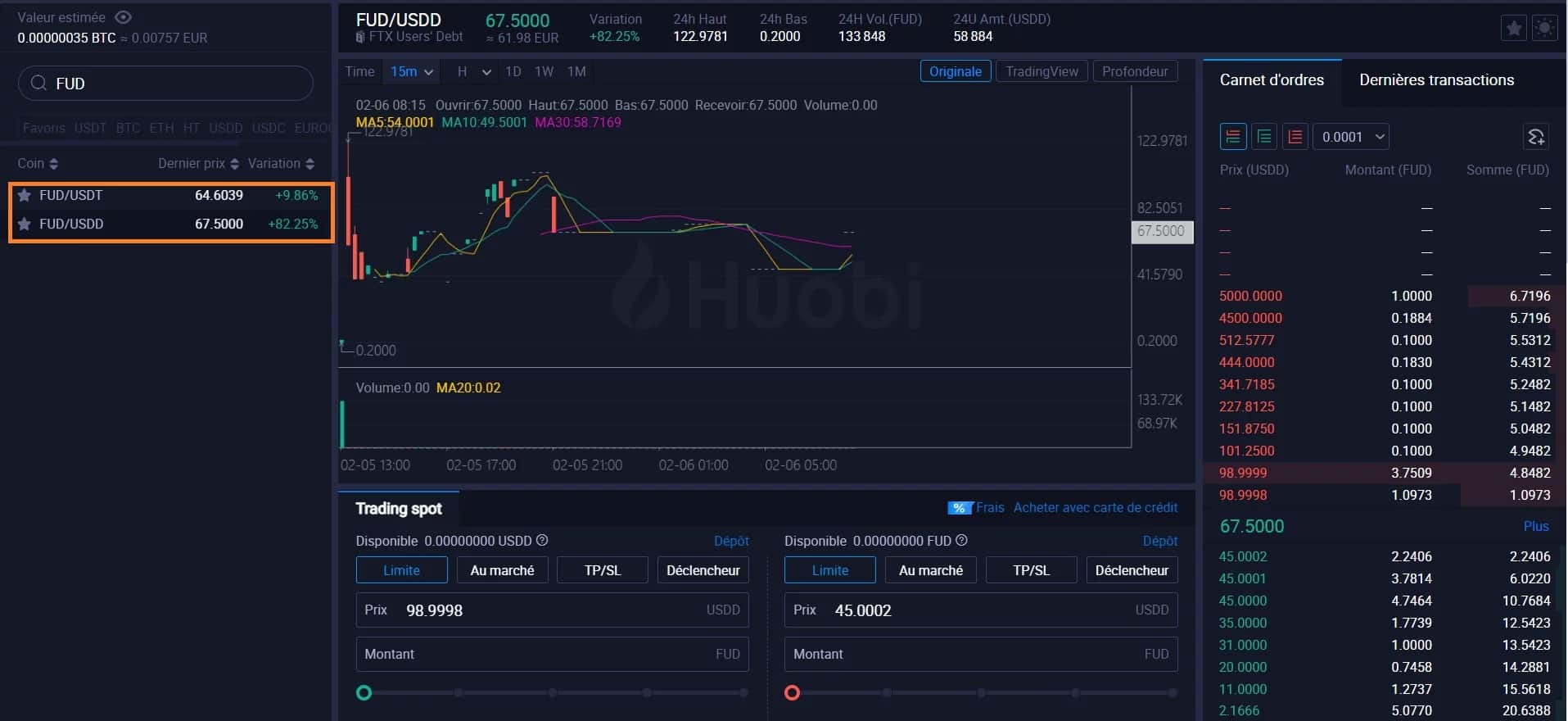This weekend, a new token called FUD appeared to supposedly compensate FTX’s creditors. As it was quickly listed on Huobi and its price skyrocketed, let’s find out if it represents a real opportunity or if it’s something to be wary of.
DebtDao issues FUD token
This weekend, a strange token issued on the Tron (TRX) network by an entity called DebtDao appeared: the FTX Users’ Debt (FUD). DebtDao claims to be an actor wishing to compensate FTX creditors in part with the FUD, which is supposed to represent 2% of the total debt with an initial price of one dollar:
2/7 DebtDAO has been notified of a debt amount of approximately $100 million by FTX creditors. With an initial supply and circulation of 20 million FUD tokens, representing 2% of FTX’s debt, each FUD token has a value of $1.
– DebtDao (@debtdaoio) February 4, 2023
Less than 24 hours after its launch, the FUD found itself listed on the Huobi exchange and its price soared. Although highly volatile, the price was over $66 per unit at the time of writing. In addition, a low order book fill in the FUD/USD pair has resulted in a price lag with the FUD/USDT pair:

Figure 1 – FUD price on Huobi
While there is no official support for this, the fact that DebtDao’s Twitter account only has just over 800 followers and that this listing comes so early suggests that Justin Sun may not be a complete stranger to the initiative:
Exciting news for the crypto community! @HuobiGlobal has listed @FTX_Official Users’ Debt Token (FUD). This bond token represents the top quality FTX debt asset and is set to benefit everyone in the crypto world. Stop FUD and trade FUD on @HuobiGlobal! https://t.co/NXaOAr6HO5
– H.E. Justin Sun 孙宇晨 (@justinsuntron) February 5, 2023
Scam or serious project?
Before investing any money in the FUD token, one should be very careful, as there are several warning signs that draw our attention, besides the name that sounds like a memecoin. For example, DebtDao’s Twitter account only posted two threads to vaguely explain what FTX Users’ Debt was, and another tweet to announce its arrival on Huobi. The link on the profile page is to the press release about the listing:

Figure 2 – DebtDao Twitter profile
A priori, there is therefore no website or whitepaper known to explain in detail the fundamentals of this token supposedly representing FTX debt. As a result, there is no guarantee of the stated value.
In this regard, there is another inconsistency in the issuance of the tokens. As explained above, 20 million tokens have so far been issued, initially representing, according to DebtDao, 2% of this debt. With a starting FUD price of one dollar, this would then correspond to a total debt of one billion dollars.
Next, Huobi and Justin Sun explain that once the actual value of the money FTX owes to its creditors is known, the total amount of FUD will be adjusted to match the value of that debt. Any additional tokens would then be sent via an airdrop to their holders. But the example that is used to express this new issue of tokens does not seem to fit with the original idea of 2%:
“Example: if the actual amount of debt is confirmed at $60 million via the FTX database or published debt information, an additional 40 million FUDs will be issued in addition to the original 20 million FUDs. “
Another line of thought points to a typo, as DebtDAO refers to $100 million in its thread. This would not be 2%, but 20%. However, this justification is still not sufficient given that FTX’s actual debt would be at least $10 billion.
Regardless of the outcome of the story, one should think twice before investing, as the current price of FUD represents a capitalisation of over $1.2 billion. Such a valuation sends the token straight into the top 50, with a capitalization equivalent to the AAVE token for example, despite being less than 72 hours old.
